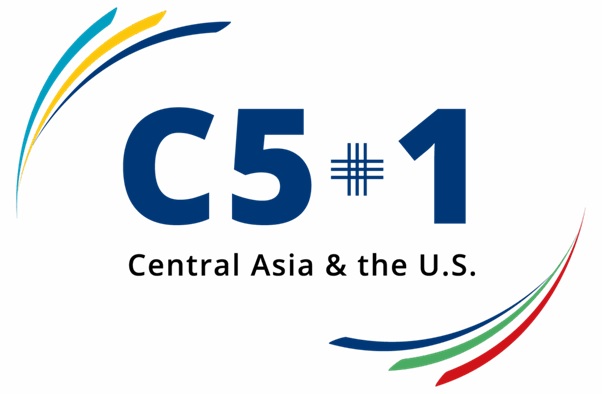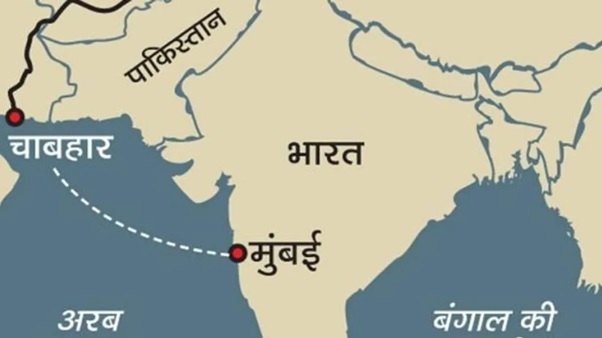| GS Paper-II — International Relations |
C5+1 is a multilateral diplomatic platform established in 2015 in Samarkand, Uzbekistan. It includes five Central Asian countries — Kazakhstan, Kyrgyzstan, Tajikistan, Turkmenistan, and Uzbekistan — plus the United States of America (USA).
- Meaning: C5 = Five Central Asian countries + 1 = USA
- Therefore, “C5+1” represents the group of five Central Asian countries and the USA.

Purpose of Establishment:
The platform was created to develop:
- Regional stability
- Economic prosperity
- Shared solutions for global challenges
Focus Areas:
- Regional connectivity
- Energy security
- Collective security framework
- Trade cooperation
Three Pillars of Cooperation (C5+1):
|
Pillar
|
Key Areas
|
Objective
|
|
Economic Cooperation
|
Trade, investment, transport, digital connectivity
|
Promote regional development and economic integration
|
|
Energy Security
|
Renewable energy, rare earth minerals, water resources
|
Ensure alternative energy sources and stable energy supply
|
|
Security Cooperation
|
Terrorism, extremism, drug trafficking, cross-border crimes
|
Maintain peace and political stability in the region
|
US Policy in Central Asia:
 Central Asia has historically been under Russian and Chinese influence. Through C5+1, the USA seeks to offer a third strategic alternative.
Central Asia has historically been under Russian and Chinese influence. Through C5+1, the USA seeks to offer a third strategic alternative.
Key Points:
- The Trump administration signed agreements worth $12.4 billion within six months, covering rare earth minerals, aviation, and security cooperation.
- China currently controls almost 90% of the world’s rare earth resources.
- The US aims to break China’s economic monopoly and develop alternative mineral sources.
- Kazakhstan has recently discovered 20 million tons of rare earth minerals, including cerium, lanthanum, neodymium, and yttrium, critical for:
- Smartphones
- Computer chips
- Military technology
Strategic Interest of the USA:
- Central Asia lies in the geographical “Heartland” between Russia and China.
- The region is rich in oil, gas, uranium, and rare earth metals.
- Access to these resources allows the US to challenge China’s dominance.
India’s Role and Perspective:
Although India is not part of C5+1, Central Asia is a key geopolitical region for India’s foreign policy.
India’s Connect Central Asia Policy (2012):
-
Objective: Develop broad political, economic, security, and cultural partnerships with Central Asian countries.
India’s Priorities in the Region:
|
Area
|
Priority
|
|
Security
|
Joint response to terrorism and extremism; stability in Afghanistan
|
|
Energy
|
Ensure supply of oil, gas, and uranium (especially from Kazakhstan and Turkmenistan)
|
|
Connectivity
|
Develop alternative routes to overcome maritime constraints
|
Key Indian Projects:

- TAPI Gas Pipeline (Turkmenistan–Afghanistan–Pakistan–India)
- Provides India with a new source of natural gas.
- Chabahar Port (Iran)
- Strategic route for India to access Central Asia
- Bypasses Pakistan
- International North–South Transport Corridor (INSTC)
- 7,200 km multi-modal network connecting India, Iran, Russia, Central Asia, and Europe
- Reduces trade costs and transit time, ensuring faster access to Europe
INSTC Route and Significance:

|
Stage
|
Route/Region
|
|
1
|
Starts from Mumbai (India)
|
|
2
|
Passes through Iranian ports
|
|
3
|
Crosses the Caspian Sea
|
|
4
|
Continues through Russia
|
|
5
|
Reaches Northern European countries
|
Significance:
- Reduces transit time by 40%
- Reduces costs by 30%
- Provides direct India–Europe trade route
Wider Objectives of the USA:
- Limit Russian and Chinese influence — integrate Central Asia into Western economic structures to balance Eurasia.
- Develop alternative supply chains — especially for energy and rare earth minerals.
- Connect Central Asia to the Western bloc (US–EU).
- Establish a “New Balance of Power” in the region.
Overall Analysis:
|
Dimension
|
Analysis
|
|
Geopolitical Importance
|
Central Asia is a buffer zone between Russia and China; the US seeks to make it a new strategic pivot.
|
|
Economic Perspective
|
Rich in rare earth minerals, oil, gas, and energy resources — a center of global competition.
|
|
Importance for India
|
Energy security, post-Afghanistan stability, and new connectivity opportunities.
|
|
Diplomatic Challenge
|
India must maintain balance among the US, Russia, and China.
|
Conclusion:
- C5+1 serves as a platform for the US to balance Russia–China influence in Central Asia.
- It is also seen as a strategic alternative to China’s Belt and Road Initiative (BRI).
- India, though not part of this forum, is strengthening its economic and strategic presence through its Connect Central Asia Policy, Chabahar Port, and INSTC.
Thus, C5+1 is not only a US–Central Asia cooperation platform but is also emerging as a new center for the Asian power balance.



 Central Asia has historically been under Russian and Chinese influence. Through C5+1, the USA seeks to offer a third strategic alternative.
Central Asia has historically been under Russian and Chinese influence. Through C5+1, the USA seeks to offer a third strategic alternative.
